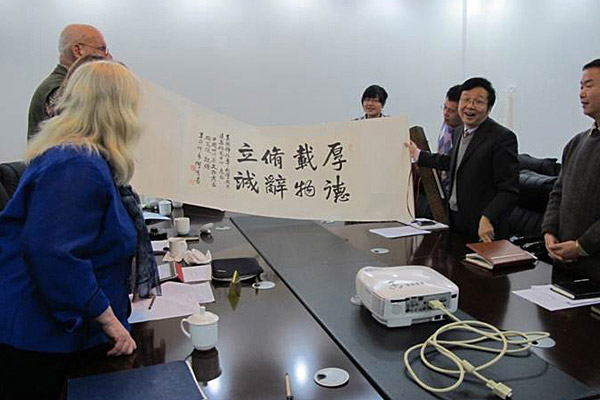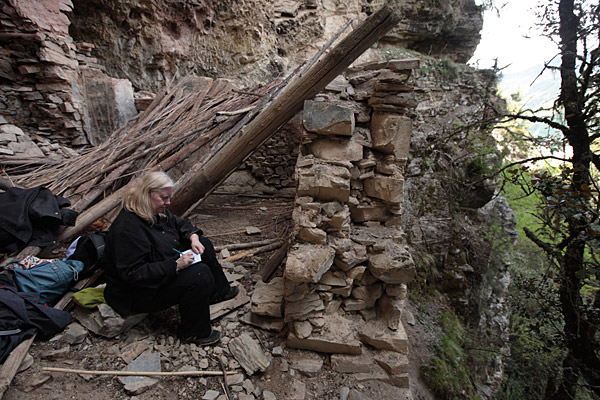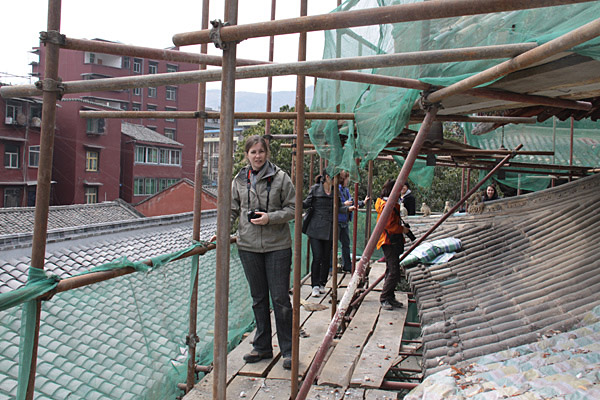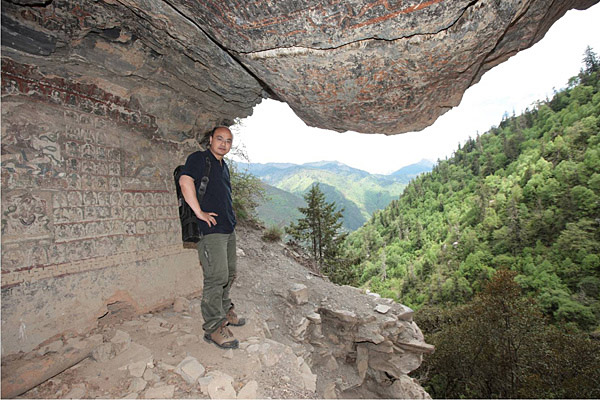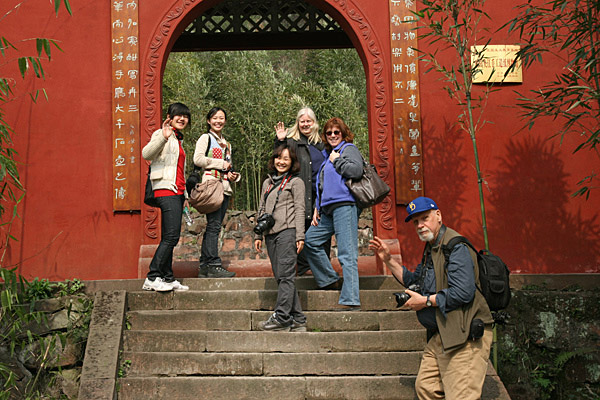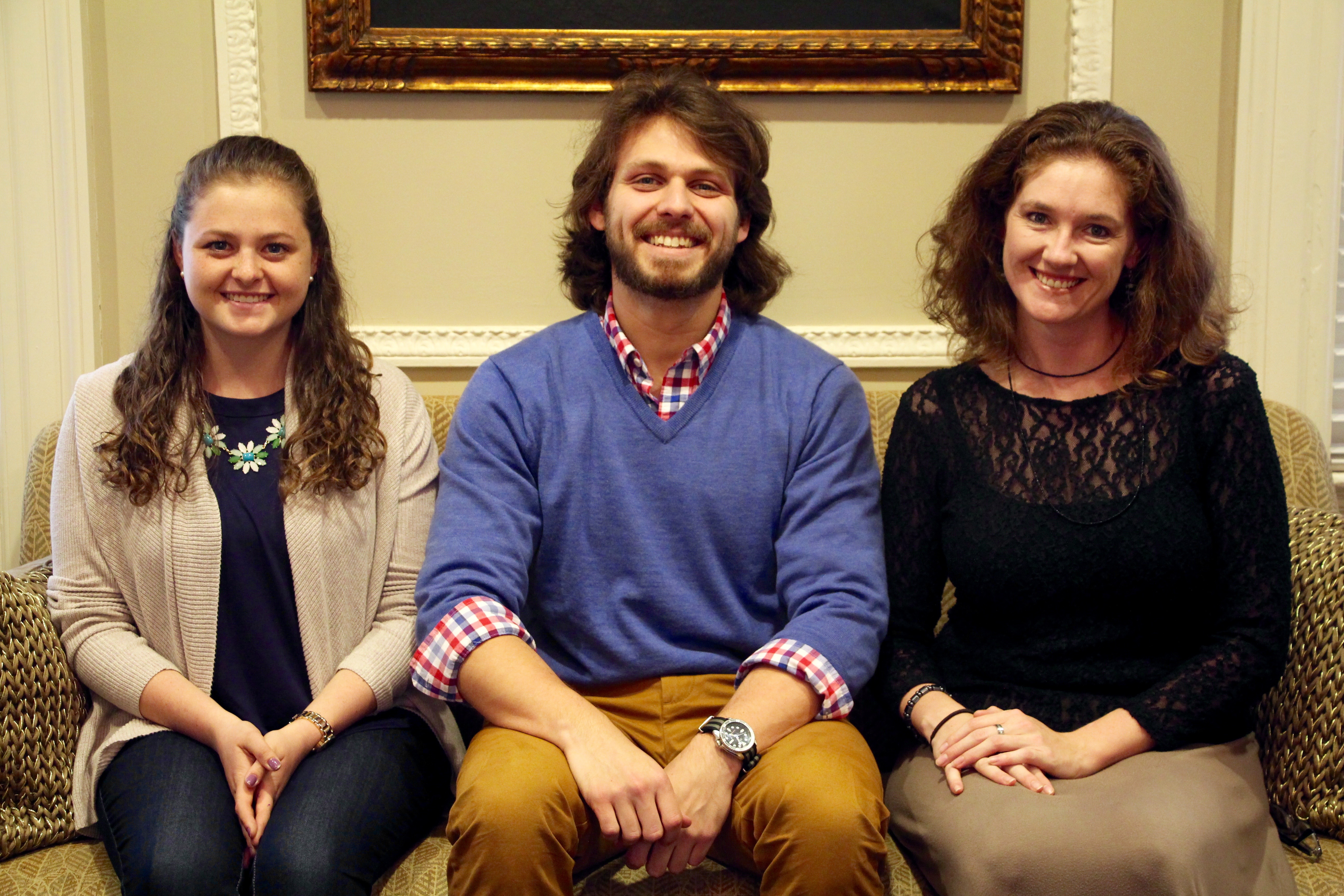

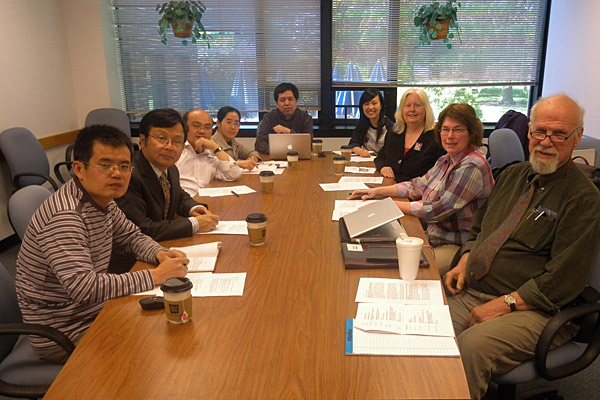
Cultural collaboration
Trilateral agreements connect UD and major cultural institutions in China
1:38 p.m., June 21, 2012--New trilateral agreements administered by the Institute for Global Studies (IGS) connect the University of Delaware with two major cultural institutions in China: the Palace Museum in the Forbidden City in Beijing, and the Sichuan Province Cultural Relics and Archaeology Research Institute in Chengdu.
The primary purpose of the new agreements is to foster collaboration in the fields of historic preservation, art and architectural history, anthropology and history of craft technologies. The lead UD partner is the Center for Historic Architecture and Design (CHAD), which is housed in the School of Public Policy and Administration (SPPA) and which oversees SPPA’s new master of arts program in historic preservation.
Global Stories
Fulbright awards
Peace Corps plans
These agreements were the result of discussions that began in 2008, during a conference on Tibetan art and archaeology held in Beijing. UD's Chandra Reedy, professor in CHAD and SPPA and a specialist in Tibetan art history who holds an appointment in the Palace Museum’s Research Center on Tibetan Buddhist Heritage, was intrigued by new discoveries reported by Wenhua Luo, a Palace Museum specialist in Tibetan paintings.
In spring 2011, after a 10-day visit to potential research sites in China, Reedy along with CHAD Director David Ames, CHAD Associate Director Rebecca Sheppard, graduate student Leah Kacanda and a recent alumnus, Ying Xu, met in Chengdu with the leadership of the Sichuan Research Institute, following a brief meeting at the Palace Museum in Beijing. At the end of this meeting, UD representatives and their Chinese partners outlined a 10-year plan for joint research, field schools, workshops and publications.
At the end of January 2012, the general and supplemental trilateral agreements were signed by all three institutions. The general agreement is designed to “create the foundation for mutual cooperation and collaboration among the academic disciplines that UD, the Sichuan Institute, and the Palace Museum have in common.” This will include teaching, research, faculty and student and professional exchanges, and any other related areas that are mutually determined.
As Reedy explains, “We will be working on joint projects for the preservation of historic towns in Sichuan, the study of temple and vernacular architecture of Sichuan, study of additional Tibetan temples and mural paintings found in Sichuan, study of intangible cultural heritage, and professional exchanges to discuss the similarities and differences in historic preservation theory and practice between China and the United States.”
The students will be involved in all of the fieldwork projects to be done under the agreements. A periodic historic preservation field school will be run in Sichuan province, which will include both UD students and students from Sichuan University.
Established in 1925, the Palace Museum is situated in the center of Beijing. In addition to being China’s largest museum, it is involved in fieldwork to study temples and paintings in Sichuan and neighboring provinces. The Sichuan Research Institute partner is in charge of all cultural heritage preservation in that province, and also works in adjacent areas of China such as Tibet.
UD became involved with these institutions because of Reedy’s long history of research in Tibetan art, material culture and intangible heritage.
“UD’s Center for Historic Architecture and Design does work throughout the mid-Atlantic that is very similar in methods and goals to the work done by the Sichuan Institute,” Reedy says.
Next spring, Reedy and Sheppard will return to Sichuan to explore additional project ideas. These are likely to include research on vernacular architecture, a joint historic preservation field school for University of Delaware and Sichuan University students, and studies of tangible and intangible aspects of traditional craft technologies.
According to the country’s State Administration of Cultural Heritage, China has about 800,000 historical sites with many being threatened by rapid development.
Article by Fariba Amini




